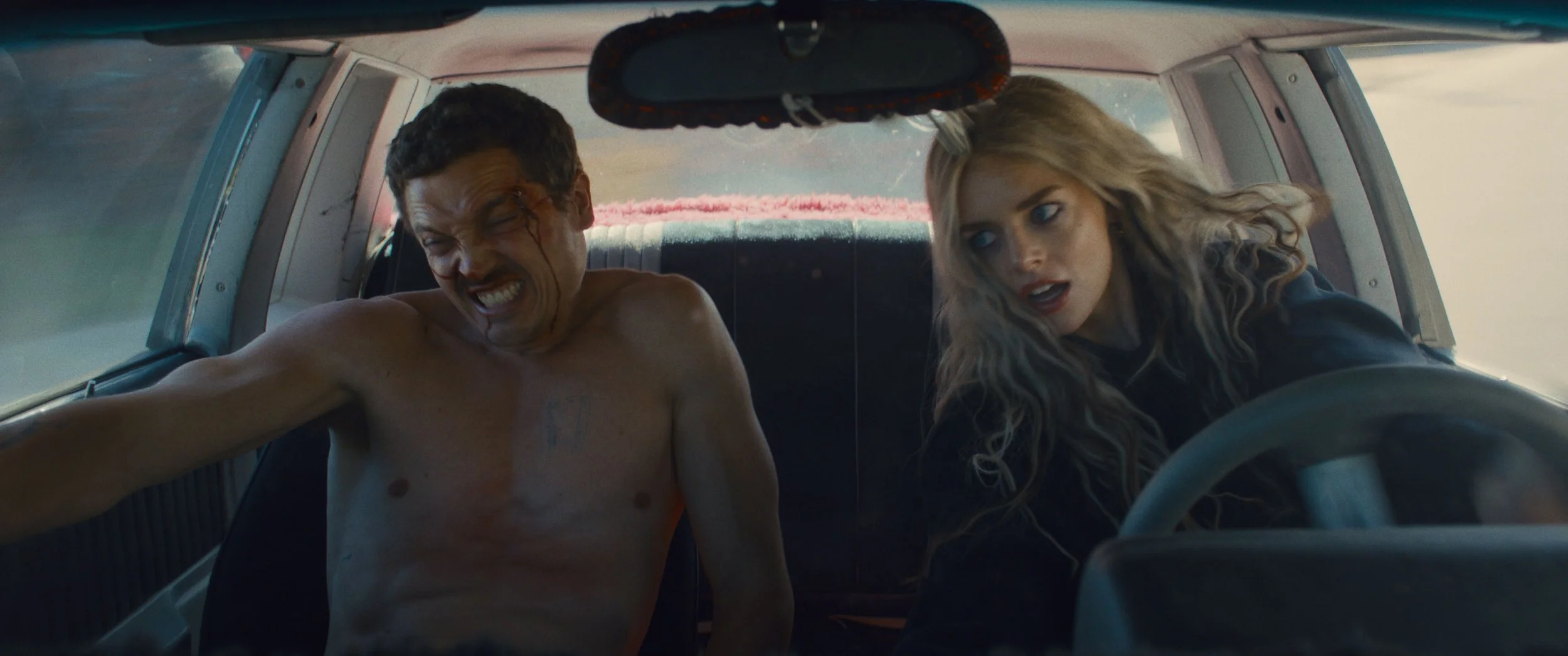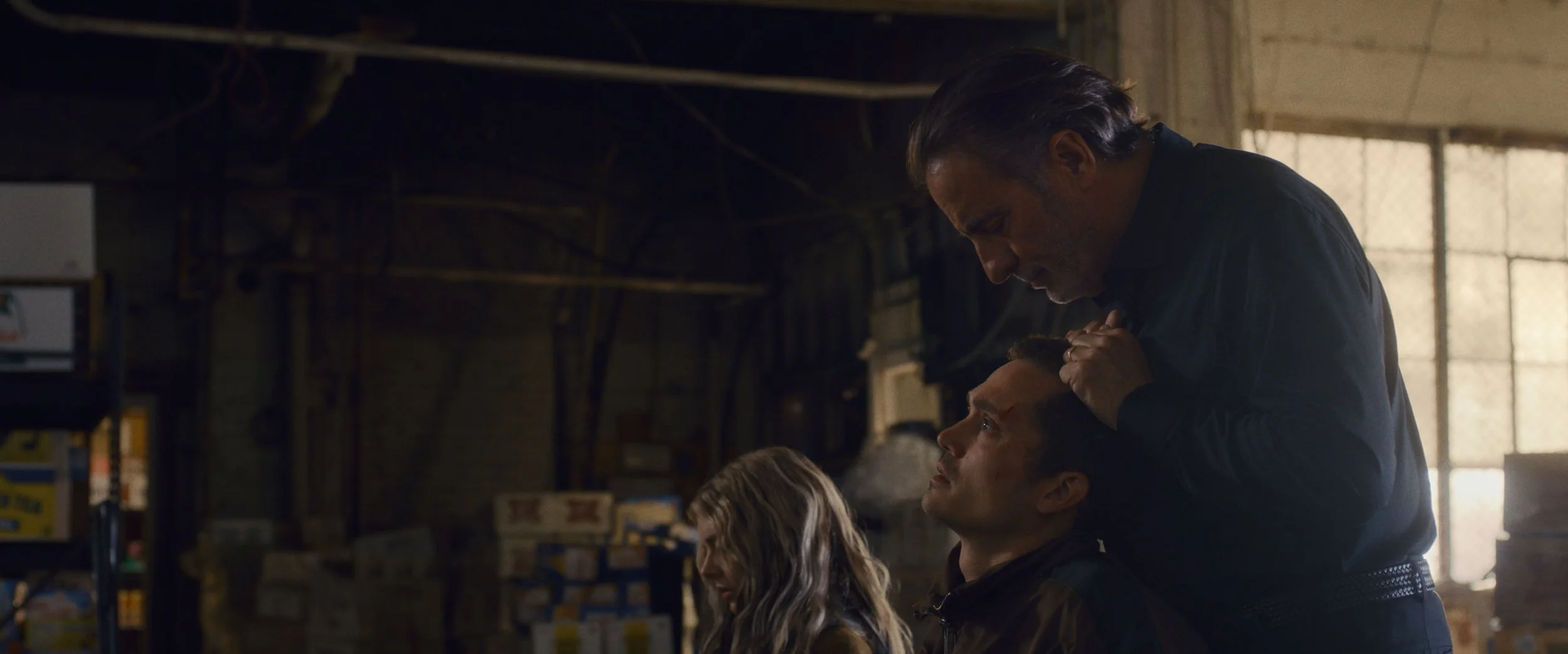‘Eenie Meanie’ Review
A heist film in the vein of Edgar Wright’s Baby Driver, but also far too indebted to the gritty crime thrillers of yore, there is something at the core of writer-director Shawn Simmons’ feature debut that is enticing. Broken people trying to make amends with themselves by breaking free from their past lives, Eenie Meanie has the pretense of a sturdy character-focused crime thriller. The issue is that none of its disparate elements come together as it barrels toward a climax of bad decisions and worse luck. A hodgepodge of unlikable characters put into self-inflicted situations, Eenie Meanie is frequently at odds with itself and does little to distance its run-of-the-mill one-last-job narrative from the many other films of its ilk. Save for a couple of fun performances and some sturdy vehicular action, Simmons’ screenplay leaves a lot to be desired even as its ambitions are clearly outlined from the jump.
Eenie Meanie has a personality crisis where its two distinct tones seem like they’re supposed to inform one another, but instead tear each other down. A quick introduction to Edie (often referred to as “Eenie”, played by Samara Weaving) depicts how she ends up on the path she’s on today—now barely making ends meet and trying to keep away from any criminal activity. Unfortunately, she’s loyal to John (Karl Glusman): an unreliable and chaotic individual. No matter how insane things get between them, he’s always got her back, and she has his. As Edie tries to get her life back on track with school and work, she is quickly embroiled in John’s issues again as he is forced to make amends to Nico (Andy Garcia) for a botched job. A skilled getaway driver who has worked for Nico in the past, Edie agrees to help John steal three million dollars from a casino.
It’s all a familiar framework as Edie is thrust through a foster system until inevitably living a life of crime. The boilerplate narrative and instantly recognizable character traits create a safety net for Simmons’ screenplay to explore characters with some profound depth. A lot of emphasis is put on Edie as this unfortunate soul whose life has become a series of choices made for her before she could make them on her own. It doesn’t help that she has tethered herself to a tornado that brings more misfortune to her life. Eenie Meanie is a tragic romance forged by drifting souls left to rely on one another to survive. Simmons even attempts to nuance the tornado that is John’s life, and does a reasonable job at doing it. It’s the shift from character-focused drama to a high-octane heist movie where a very fractured screenplay surfaces.
Simmons is very clearly influenced by some of the best films in the crime genre, but the direction is all over the place, and the screenplay is equally as scattershot. Characters will fall into intimate conversations not unlike a Michael Mann film, but then also sprinkle in the zing of a Guy Ritchie joint. The obvious comparison to Edgar Wright’s Baby Driver paints a portrait of a movie that is heavy on entertainment and light on drama, but Eenie Meanie is filled to the brim with character-driven moments and introspection that slow the whole enterprise down. It gives the film this feeling like it’s spiralling with purpose. Unfortunately, it also wants to surprise audiences through chaos and those chaotic decisions are almost universally met with more questions. The tonal shifts from gritty crime thriller to fun action are jarring and often superfluous. They’re entertaining moments that feel unnecessarily brisk and undercut the weight of the character’s problems. Any meaning to be found in the chaos resuming is lost within the shuffle.
There’s also an early plot development that specifically centers around Edie and John’s relationship—something which is called into question by every character—and it’s telling that the film doesn’t bring it up too much until closer to the end. There’s a lot of baggage to unpack, and if the film wants to do that meaningfully, it needs to find a way to have that conversation without it feeling forced. Instead, all of the momentum of the movie comes to a grinding halt. The biggest grievance is that Eenie Meanie takes too long to showcase why John and Edie can’t stay away from each other. That magnetic pull that keeps John afloat and drags Edie down but somehow makes them feel whole is relatively invisible. It’s a crucial component to make the film work—especially some of its later developments—but the relationship doesn’t feel as lived-in as it needs to thrive.
The performances are not part of the problem, especially in the case of Karl Glusman, who finds a vulnerability in a generally unlikable character. Weaving can play a badass in her sleep at this point, having stretched those muscles ad nauseam in genre films, so it’s no surprise that she’s dependably solid here. Her and Garcia are the least surprising performances, with the latter able to be a vulnerable and despicable person at the same time. However, John is interesting because our preconception of him is set from the beginning, as everyone hates him. It’s trying to understand the endearing aspects that Edie sees that make Glusman’s performance far more fascinating. Unfortunately, the characters are written in a way where our means of getting to know them is almost always through personal history lessons. Vulnerability is what Simmons tries to inject into every character, but it rarely comes off as diegetic unless the actor finds it within the moment.
Eenie Meanie’s strengths are in its set pieces. While the heist itself is not particularly intricate or engaging, the car chases instill excitement into an otherwise dour tone. When a car chase starts, the film takes on a far more burly and kinetic demeanour. There’s an undeniable confidence in how Simmons directs these scenes. Muscle cars shifting gears as Edie masterfully drifts from one risky maneuver to the next, Simmons demonstrates how his influences have informed his craft within each set piece. It’s just disappointing that the talent that Edie has behind the wheel never seems to be what’s at risk with her pursuing a different life: she wants something normal, but without much interrogation into why exactly she wants that. It feels like there’s something more eating away at Edie, especially with her relationship to John, but it never crystallizes into something tangible.
While there are moments where Eenie Meanie genuinely seems like it might be onto something, there’s a confusion that persists. It’s evident in the side characters introduced throughout that their personalities are often just caricatures or comedic relief. There’s a domestic drama at the heart of this film that never thoughtfully develops. One can’t help but point to some form of studio intervention that might have demanded more jokes and less reflection, but almost all of the comedy that’s injected into the screenplay is groanworthy and left to the actors to try and sell. Eenie Meanie’s inability to find that middleground ultimately costs the film its realism and entertainment value. You could do far worse than this if you need a heist film on in the background, but as the film frequently reminds us in its myriad of influences, you can definitely do a lot better.


